Flight Items

What should I include in my carry-on luggage for a long-haul flight ?
When packing your carry-on luggage for a long-haul flight, it's important to consider the items that will make your journey more comfortable and enjoyable. Here are some essential items to include: ### 1\. Personal Items - **Passport and travel documents**: Make sure to bring your passport, visa (if required), boarding pass, and any other necessary travel documents. - **Wallet and money**: Bring your wallet with cash, credit cards, and any currency you may need for your destination. - **Phone and charger**: Don't forget your phone and its charger, as well as any necessary adapters or converters for international use. - **Medication and health products**: If you have any medication or health products that you need during the flight, make sure to pack them in your carry-on luggage. - **Personal hygiene items**: Pack a small toiletry bag with items such as toothbrush, toothpaste, deodorant, hand sanitizer, and moisturizer. ### 2\. Comfort Items - **Snacks and drinks**: Bring some snacks and water to keep yourself hydrated and satisfied during the flight. - **Entertainment**: Pack a book, magazine, or e-reader to keep yourself entertained during the flight. You can also download movies or TV shows onto your device beforehand. - **Headphones or earbuds**: Bring headphones or earbuds to listen to music, watch movies, or block out noise during the flight. - **Travel pillow and blanket**: A travel pillow and blanket can help you get comfortable and restful during the flight. - **Eye mask and earplugs**: An eye mask and earplugs can help you block out light and noise, allowing you to sleep more easily during the flight. ### 3\. Clothing and Accessories - **Comfortable clothing**: Wear comfortable clothing on the flight, such as stretchy pants or leggings, a loose-fitting shirt, and comfortable shoes. - **Sweater or jacket**: Bring a sweater or jacket to keep yourself warm during the flight, especially if you tend to get cold easily. - **Socks and slippers**: Pack a pair of socks and slippers to keep your feet warm and comfortable during the flight. - **Sunglasses and hat**: Bring sunglasses and a hat to protect yourself from the sun when you arrive at your destination. ### 4\. Miscellaneous Items - **Reusable water bottle**: Bring an empty reusable water bottle to fill up after passing through security, rather than buying bottled water at the airport. - **Pen and paper**: Bring a pen and paper to jot down notes or ideas during the flight. - **Travel journal**: If you enjoy writing, consider bringing a travel journal to document your experiences during the trip. - **Small backpack or purse**: Use a small backpack or purse to store all of your carry-on items, making it easy to access them during the flight.
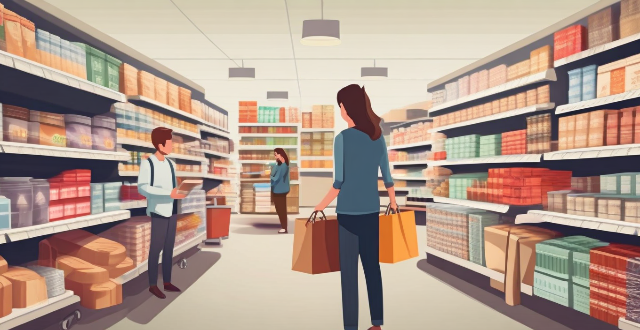
Can I still get a tax refund if I have a connecting flight within the EU ?
To obtain a tax refund when you have a connecting flight within the EU, follow these steps: purchase goods in a participating store, complete the tax-free shopping form, obtain a customs stamp, and claim your tax refund. Having a connecting flight does not affect your ability to get a tax refund.

Can you suggest any essential items I should always pack for a vacation ?
When planning a vacation, it's important to pack the essential items that will ensure your comfort and safety throughout the trip. These include travel documents, clothing, toiletries, electronics and accessories, and miscellaneous items such as a travel pillow, reusable water bottle, snacks, reading material, cash and credit cards, and a travel journal. By packing these essentials in your carry-on luggage, you can ensure a comfortable and enjoyable vacation experience.

What are the essential items to pack for a backpacking trip ?
Essential Items to Pack for a Backpacking Trip: Shelter and Sleeping Gear, Clothing, Food and Water, Cooking and Eating Utensils, First Aid Kit and Safety Items, Navigation Tools, and Miscellaneous Items.

What are the challenges faced by air travel industry due to changing climate patterns ?
The air travel industry is facing numerous challenges due to changing climate patterns, including extreme weather events, altered flight paths, airport infrastructure damage, health risks, and environmental concerns. These challenges can impact flight schedules, increase maintenance costs, and require changes to air traffic control systems. To adapt, airlines must invest in innovative solutions that prioritize sustainability and resilience.

What are some common pitfalls to avoid when buying second-hand items ?
When buying second-hand items, it's important to inspect them thoroughly for any signs of damage or wear and tear. You should also verify the authenticity of luxury items and research their value to ensure you're getting a fair price. Be wary of scams and consider the return policy before making a purchase. By following these tips, you can avoid common pitfalls and find great deals on high-quality products.
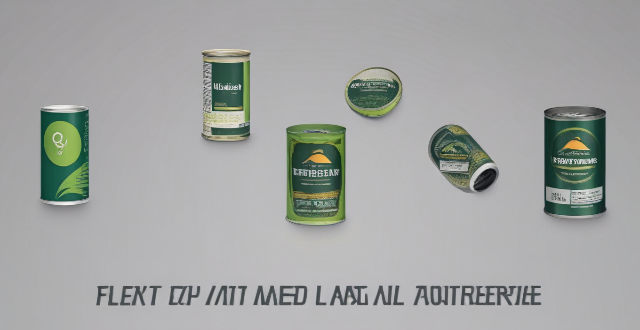
How can I save money while shopping for luxury items ?
Shopping for luxury items doesn't have to be expensive if you follow these tips. Set a budget, research prices, wait for sales, choose timeless designs, invest in quality, consider pre-owned items, negotiate prices, and avoid impulse buying to save money while enjoying the finer things in life.

How early should I arrive at the airport before my flight ?
When it comes to arriving at the airport before your flight, there are several factors to consider. Here are some general guidelines to help you plan your trip: - For domestic flights within the United States or other countries, it is generally recommended to arrive at the airport at least 2 hours before a non-peak hour flight and 3 hours before a peak hour (morning and evening rush hours) flight. - For international flights departing from the United States or other countries, it is generally recommended to arrive at the airport at least 3 hours before a non-peak hour flight and 4 hours before a peak hour (morning and evening rush hours) flight. - If you have any special circumstances such as checking bags, traveling with children or elderly persons, or needing extra time for security screenings, customs, and immigration procedures, you may want to allow for more time. - Additional factors that can impact how early you should arrive at the airport include airport size and location, time of day, transportation method, security measures, and special circumstances. Overall, it is always better to arrive at the airport earlier rather than later to avoid any last-minute stress or missed flights. Plan ahead and give yourself plenty of time to navigate through the airport processes smoothly.

What are the essential items to include in a disaster preparedness kit ?
A disaster preparedness kit should include essential items such as water, non-perishable food, a first aid kit, warm clothing and bedding, light sources, communication devices, tools, cash, important documents, and personal items. It is crucial to regularly check and replace expired items to ensure the kit is ready for any emergency situation.
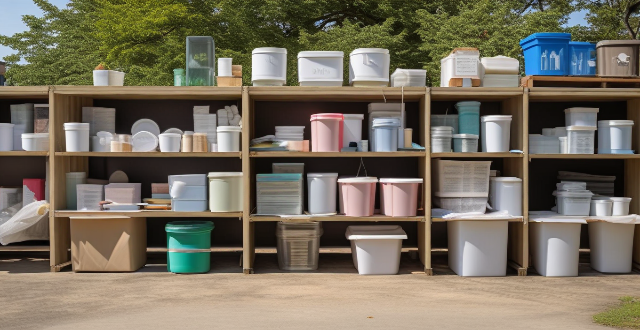
What are the best practices for recycling household items ?
Recycling household items is crucial for reducing waste and conserving resources. Best practices include knowing local guidelines, cleaning items, flattening cardboard, separating recyclables, using bins properly, donating usable items, composting organic waste, and buying products with recyclable packaging. By following these steps, individuals can contribute to a more sustainable future and reduce their environmental impact.
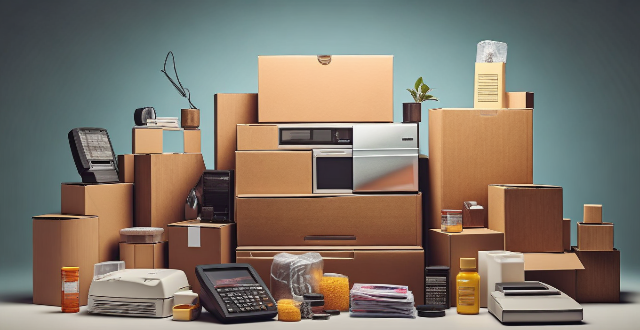
How do I know if the discounted items at Outlet Stores are of good quality ?
Outlet stores offer discounted items, but it's important to assess their quality before buying. Check for manufacturer defects, research brand reputation, compare prices with non-discounted items, and ask about return policies.

What are some creative ways to repurpose second-hand items ?
Repurposing second-hand items is a creative and sustainable practice that can save money and reduce waste. Here are some ideas for giving new life to pre-loved items: furniture makeover, clothing transformations, kitchenware reinvention, accessory revamps, artwork and décor, and kids' toys reimagined. By getting creative with second-hand items, we can contribute to promoting sustainability while saving money.
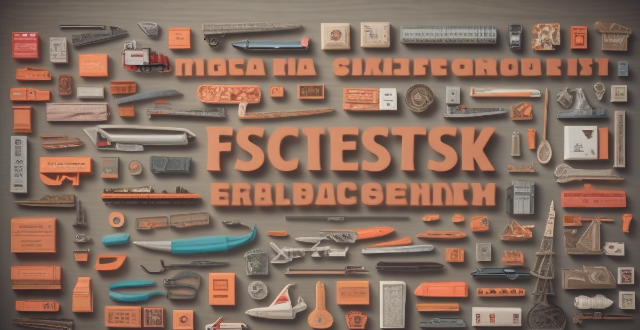
How can I safely transport large or fragile second-hand items ?
The article provides a detailed guide on how to safely transport large or fragile second-hand items. It starts by listing the necessary packing materials and then moves on to assessing the item for pre-existing damage. The article emphasizes the importance of disassembling larger items, proper packing techniques for both fragile and large items, and loading the vehicle carefully. It also includes tips for safe driving during transit and careful unloading. The article concludes with a recommendation to consult professional movers when unsure about handling such items.

What are some fast techniques for sorting and storing items ?
Sorting and storing items can be a time-consuming task, but there are several fast techniques that can help you organize your belongings efficiently. Here are some tips to get started: 1. Declutter First: Remove unnecessary items from your space. Donate or sell items that are still in good condition. Dispose of items that are broken or unusable. 2. Categorize Your Items: Categorize your items into groups based on their purpose, frequency of use, or any other criteria that make sense for your situation. This will help you determine where each item should be stored. 3. Use Containers and Labels: Invest in containers of various sizes to store your sorted items. Clear containers are great because they allow you to see what's inside without opening them. Label each container with its category or contents to make it easy to find what you need quickly. 4. Utilize Vertical Space: Shelves, hanging organizers, and wall-mounted racks can help maximize your storage capacity and keep things off the floor. 5. Maintain Organization: After sorting and storing your items, it's crucial to maintain their organization regularly. Set aside time each week or month to go through your belongings and ensure everything is in its proper place.

What are the top websites for purchasing second-hand or refurbished items ?
Purchasing second-hand or refurbished items is a great way to save money while also being environmentally conscious. Here are some of the top websites for buying such items: 1. eBay is one of the largest online marketplaces where you can find both new and used items. It offers a wide range of products, including electronics, clothing, furniture, and more. 2. Craigslist is a classified advertisements website where people can post listings for various items, including second-hand goods. 3. Facebook Marketplace is a platform within Facebook where users can buy and sell items locally. 4. OfferUp is a mobile app that allows users to buy and sell items locally. 5. Swappa is an online marketplace specifically designed for buying and selling gently used technology like smartphones, laptops, and tablets. 6. Gazelle is a website that specializes in buying and selling refurbished electronics, including smartphones, tablets, and laptops.

What are some tips for finding cheap flights and accommodations ?
Finding cheap flights and accommodations can be a daunting task, but with the right strategies, you can save money and still have a great travel experience. Here are some tips to help you find affordable options: ## 1\. Be Flexible with Your Travel Dates One of the best ways to find cheap flights and accommodations is to be flexible with your travel dates. Prices often fluctuate depending on the time of year, day of the week, and even the time of day. If possible, try to travel during off-peak seasons or midweek when prices tend to be lower. ## 2\. Book in Advance or Last Minute Booking your flight and accommodation well in advance can often result in significant savings. However, if your schedule allows it, booking last minute can also lead to great deals as airlines and hotels look to fill empty seats and rooms. ## 3\. Use Flight Aggregator Websites Flight aggregator websites like Skyscanner, Kayak, and Google Flights allow you to compare prices across multiple airlines and find the best deals. These sites often have features that enable you to set price alerts or search for flights from nearby airports, which can sometimes be cheaper. ## 4\. Consider Alternative Airports Flying into an alternative airport near your destination can sometimes result in lower airfare. For example, flying into Newark instead of JFK in New York City might save you money on your flight. ## 5\. Sign Up for Newsletters and Loyalty Programs Signing up for newsletters and loyalty programs from airlines and hotels can provide you with exclusive discounts and promotions. These offers can help you save money on future bookings. ## 6\. Use Credit Card Rewards If you have a credit card that offers travel rewards, consider using those rewards to pay for your flights or accommodations. This can significantly reduce the cost of your trip without having to spend additional money out of pocket. ## 7\. Look for Package Deals Sometimes booking a flight and hotel together as a package deal can be cheaper than booking them separately. Travel agencies and online booking platforms often offer package deals that include both elements of your trip at a discounted rate. ## 8\. Avoid Peak Travel Seasons Traveling during peak seasons like summer or holidays can be more expensive due to high demand. If possible, try to plan your trip during off-peak seasons when prices are generally lower. ## 9\. Use Budget Airlines and Accommodations Budget airlines and accommodations can offer significant savings compared to their full-service counterparts. While they may not provide all the amenities of more expensive options, they can be a great way to save money on your trip. ## 10\. Negotiate with Hotels Directly Calling hotels directly and asking about any available discounts or promotions can sometimes result in better rates than booking online. It's always worth asking if there are any unadvertised deals available.

What are the most common mistakes travelers make at the airport ?
Traveling through airports can be stressful, but avoiding these common mistakes can make the experience smoother and more enjoyable. Here are some of the most common mistakes travelers make at the airport: 1. Not checking in online before arriving at the airport, which can lead to long wait times and potentially missing your flight. 2. Arriving late to the airport, which can cause stress and anxiety as you rush to get through security and find your gate. 3. Overpacking in your carry-on luggage, which can make it harder to navigate through the airport and result in having to pay extra fees if your bag exceeds weight or size restrictions. 4. Not being prepared for security checks, which can slow you down and cause delays. 5. Not knowing where your gate is located before heading to the airport, which can cause confusion and potentially missing your flight. 6. Not charging electronics before heading to the airport, which can leave you without access to important devices during your flight or while waiting at the airport.
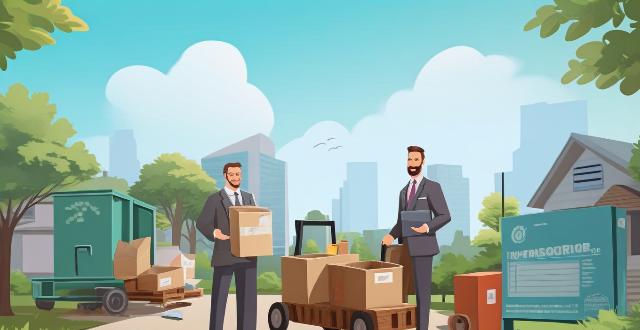
What are the benefits of recycling and reusing second-hand items ?
Recycling and reusing second-hand items offer significant benefits for the environment, economy, and society. By reducing landfill waste, conserving natural resources, and lowering emissions, these practices help to mitigate environmental challenges. Economically, they provide cost savings for individuals and create job opportunities. Socially, they promote sustainability and community engagement. Overall, recycling and reusing second-hand items are essential steps towards a more sustainable future.

What is the ideal way to pack fragile items for a journey ?
Packing fragile items for a journey can be a daunting task, but with the right approach, you can ensure that your precious belongings arrive at their destination safely. Here are some tips on how to pack fragile items ideally: 1. Use proper packing materials such as bubble wrap, packing paper, foam peanuts, and anti-static polyethylene bags. 2. Wrap each item individually to reduce the risk of damage during transit. 3. Use boxes of appropriate size to accommodate the item without too much extra space or pressure. 4. Label boxes appropriately with clear, legible writing to indicate that the box contains fragile items and which direction is up.

How can I effectively describe my second-hand items to attract buyers ?
When selling second-hand items, it's important to provide a clear and compelling description that captures potential buyers' attention. Here are some tips on how to effectively describe your items: 1. Keep the title short and sweet, using keywords related to the item and mentioning the brand and model if applicable. 2. Provide a brief overview of the item's condition and features, and mention any standout qualities or unique aspects. 3. Clearly state the condition of the item, using descriptive words like "like new," "gently used," or "well-loved." If there are any flaws or damages, mention them explicitly. 4. Highlight the main features and benefits of the item, using bullet points for easy reading and emphasizing any additional accessories or bonus items included. 5. Include multiple high-quality photos showing different angles and details, making sure they are well-lit and focused. Consider adding a photo of the item in use or with a size reference. 6. Set a fair price by researching similar items to determine a competitive price point, and consider offering a negotiation range or stating "firm" if you're not willing to budge. 7. Mention where you are located and whether local pickup is available, and if you offer shipping, specify the cost and estimated delivery time. 8. Provide a way for interested buyers to contact you, such as an email address or phone number, and consider adding a link to your profile or website for more information about other items you may have listed. By following these guidelines, you can create an effective description that will help attract potential buyers and increase your chances of successfully selling your second-hand items.

What are the essential items to include in a grocery shopping list ?
When creating a grocery shopping list, it's important to consider your dietary needs, preferences, and any specific recipes you plan to make during the week. Here are some essential items to include in your list: - Fresh produce like fruits, vegetables, herbs & spices - Meat & dairy products such as chicken, beef, milk, cheese, yogurt, eggs, etc. - Grains & legumes including rice, pasta, quinoa, bread, beans, lentils, chickpeas, etc. - Pantry staples like oils & vinegars, baking supplies, snacks - Beverages like water, coffee & tea, juices & sodas - Personal care & household items like toiletries and cleaning supplies Customize your list based on your personal preferences and dietary restrictions. Happy shopping!

What are the essential items to include in a home first aid kit ?
A well-stocked first aid kit is an essential component of any home. It should contain items that can help you deal with minor injuries and illnesses that may occur in your household. Here are some of the essential items that you should include in your home first aid kit: 1. Adhesive Bandages 2. Sterile Gauze Pads and Rolls 3. Medical Tape 4. Antiseptic Wipes or Solution 5. Tweezers 6. Scissors 7. Thermometer 8. Pain Relievers 9. Antihistamines 10. Cold and Hot Packs 11. Latex Gloves 12. Safety Pins
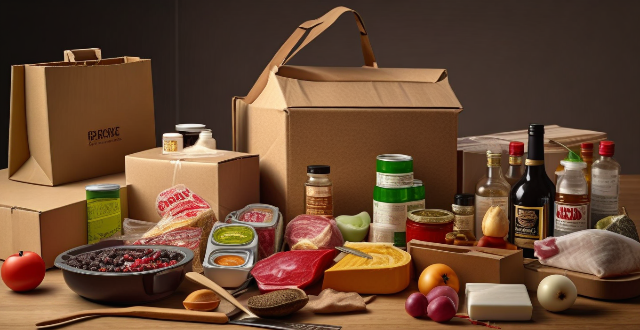
Are there any specific items that cannot be included in a tax-free shopping claim ?
Certain items may not qualify for tax exemption in tax-free shopping, including alcohol and tobacco products, perishable food items, medications and prescription drugs, firearms and weapons, and hazardous materials. The specific items that cannot be included in a tax-free shopping claim may vary depending on the country's customs regulations and policies.

How can I make the most of a long layover at the airport ?
How to Make the Most of a Long Layover at the Airport Having a long layover at the airport can be both a blessing and a curse. On one hand, it gives you more time to relax and explore the airport amenities. On the other hand, it can also be boring and frustrating if you don't know how to make the most of your time. Here are some tips on how to make the most of a long layover at the airport: 1. **Explore the Airport** * Visit the Duty-Free Shops: Duty-free shops offer a wide range of products, from cosmetics and perfumes to electronics and souvenirs, often at discounted prices. Take advantage of this opportunity to do some shopping or pick up a gift for someone special. * Check Out the Food Courts: Airport food courts offer a variety of dining options, from fast food to sit-down restaurants. Use this time to try out new dishes or enjoy your favorite meal before your next flight. * Visit the Art Galleries and Exhibits: Many airports feature art galleries and exhibits showcasing local artists and culture. Take a stroll through these areas to learn more about the destination you're visiting or passing through. 2. **Relax and Recharge** * Find a Quiet Spot to Read or Work: Look for quiet areas in the airport where you can settle down with a good book or catch up on work without distractions. Many airports have designated quiet zones or business centers equipped with comfortable seating and charging stations. * Get a Massage or Spa Treatment: Some airports offer massage chairs, spa treatments, and even yoga classes to help travelers relax and rejuvenate during their layover. Check out the airport's website or ask staff for information on available services. * Take a Nap in a Lounge or Sleep Pod: If you need to rest, consider paying for access to an airport lounge that offers comfortable seating, snacks, and beverages. Alternatively, some airports have sleep pods where you can rent a private space to take a nap for a few hours. 3. **Stay Connected** * Use Free Wi-Fi: Most airports offer free Wi-Fi service, allowing you to stay connected with friends, family, and work while waiting for your next flight. Look for signs indicating the network name and password, or ask airport staff for assistance. * Charge Your Devices: Make sure your devices are fully charged before boarding your next flight by using the available charging stations throughout the airport. Some airports also offer portable chargers for rent or purchase if you need extra power. 4. **Stay Entertained** * Watch Movies or TV Shows: Many airports have screens displaying movies, TV shows, and live sports events. Find a comfortable spot near one of these screens and enjoy the entertainment while waiting for your flight. * Download Entertainment Apps: Download apps like Netflix, Hulu, or Amazon Prime Video before your trip so you can stream movies, TV shows, and music offline during your layover. This way, you won't have to worry about using data or finding Wi-Fi connections.

How do I properly clean and sanitize second-hand items before using them ?
The provided text offers a comprehensive guide on properly cleaning and sanitizing second-hand items to ensure their safety for use. The steps are divided into general cleaning procedures, specific instructions for different types of items like clothing, footwear, furniture, kitchenware, toys, and electronics, and additional tips on sanitization. The process involves inspection, initial cleaning, disassembly (if needed), soaking for smaller items, and using appropriate cleaning methods for various items. Sanitizing tips emphasize the wise use of disinfectants, ensuring ventilation, protecting oneself from harsh chemicals, and drying items thoroughly to prevent mold growth. This detailed guide ensures that second-hand items are not only reused but also recycled safely.

What are some popular online marketplaces for buying and selling second-hand items ?
Popular Online Marketplaces for Buying and Selling Second-hand Items Several online marketplaces allow people to buy and sell second-hand items, providing a convenient way to declutter homes, find unique items, and save money. Some of the most popular options include: 1. eBay - a large and well-known platform with buyer protection policies, shipping options, and payment methods. However, it charges listing fees and takes a percentage of each sale. 2. Craigslist - a free classified ads website for various categories, including second-hand items. It allows local transactions, reducing shipping costs and time delays, but lacks buyer protection policies and limited user verification. 3. Facebook Marketplace - a feature within the Facebook app that connects buyers and sellers within their community. It is easy to access and use, but also lacks official buyer protection policies and limited user verification. 4. OfferUp - a mobile app for buying and selling second-hand items locally within a community. It offers a user-friendly interface, in-app messaging, and ratings systems to help ensure secure transactions. However, it may not have as large of a user base compared to other platforms. 5. Poshmark - an online marketplace specifically designed for buying and selling fashion items, including clothing, accessories, and footwear. It offers a dedicated platform for fashion enthusiasts and features such as virtual styling sessions and social media integration. However, it focuses solely on fashion items, limiting its appeal to those looking for other types of second-hand goods. 6. Depop - a social shopping app for buying and selling unique fashion items, including clothing, accessories, and footwear. It offers a visually appealing platform with a strong emphasis on individuality and creativity, direct messaging, and ratings systems. However, it also focuses solely on fashion items and has had some reported issues with customer service and shipping delays.
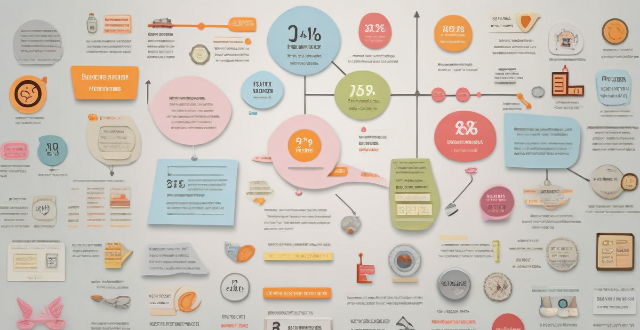
What is the return policy for items purchased during a limited-time promotion ?
When you purchase items during a limited-time promotion, it is important to understand the return policy associated with those purchases. The return policy for items purchased during a limited-time promotion may vary depending on the retailer or brand. Most retailers have a specified time limit for returns, which is usually stated in their return policy. The item must be returned in its original condition, including any packaging and accessories that were included with the purchase. Refunds are typically issued using the same method of payment as the original purchase. There are some exceptions to the general return policy for items purchased during a limited-time promotion, such as final sale items, customized items, and shipping and handling fees. To ensure a smooth return process, keep receipts and packaging, check the return policy before purchasing, and contact customer service if unsure.

How often should I check and replace items in my emergency preparedness kit ?
Maintaining an emergency preparedness kit is crucial for ensuring you have the necessary supplies in case of unexpected events. The frequency of checking and replacing items depends on several factors, including expiration dates and usage. General guidelines include monthly quick inspections, annual detailed reviews, and immediate replacements after use. Specific items to consider are medical supplies, food and water, batteries, clothing, and tools. Best practices include labeling expiration dates, keeping a list, and staying informed. Regular maintenance ensures your kit is always ready for emergencies.